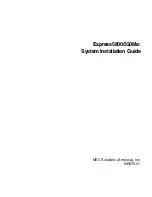
OPTIMOD-PC INTRODUCTION
1-31
higher the data rate, the less the peak levels will be corrupted by added noise, so
use the highest data rate practical in your system.
It is practical (though not ideal) to use lossy data reduction to pass unprocessed au-
dio to OPTIMOD-PC’s input. The data rate should be at least of “contribution qual-
ity”—the higher, the better. If any part of the studio chain is analog, we recommend
using at least 20-bit A/D conversion before encoding.
Because OPTIMOD-PC uses multiband limiting, it can dynamically change the fre-
quency response of the channel. This can violate the psychoacoustic masking as-
sumptions made in designing the lossy data reduction algorithm. Therefore, you
should leave “headroom” in the algorithm so that OPTIMOD-PC’s multiband proc-
essing will not unmask quantization noise. This is also true of any lossy data reduc-
tion applied in the studio (such as hard disk digital delivery systems).
For MPEG Layer 2 encoding, we recommend 384 kb/second or higher.
Some links may use straightforward PCM (pulse-code modulation) without lossy data
reduction. If you connect to these through an AES3 digital interface, these can be
very transparent, provided they do not truncate the digital words produced by the
devices driving their inputs and they do not require downward sample rate conver-
sion.
Downward sample rate conversion can cause overshoot due to spectral
truncation of the 48 kHz peak-controlled samples.
Starting with V2.2 software, peak control in OPTIMOD-PC occurs at a 192 kHz sam-
ple frequency, which limits potential overshoot to 0.5 dB or less after D/A conversion
or sample rate conversion.
Downward sample rate conversion can cause overshoot due to spectral
truncation. To prevent this, always set OPTIMOD-PC’s lowpass filter cutoff
frequency to complement the lowest sample frequency you are using in
your transmission system. Use 20 kHz for sample frequencies of 44.1 kHz
and above, and use 15 kHz for a sample rate of 32 kHz.
If the link does not have an AES3 input, you must drive its analog input from
OPTIMOD-PC’s monitor output.
NICAM
is a sort of hybrid between PCM and lossy data reduction systems. It uses a
block-companded floating-point representation of the signal with J.17 preemphasis.
Older technology converters (including some older NICAM encoders) may exhibit
quantization distortion unless they have been correctly dithered. Additionally, they
can exhibit rapid changes in group delay around cut-off because their analog filters
are ordinarily not group-delay equalized. The installing engineer should be aware of
all of these potential problems when designing a transmission system.
You can minimize any problems by always driving a digital STL with OPTIMOD-PC’s
AES3 digital output, which will provide the most accurate interface to the STL. The
digital input and output accommodate sample rates of 32 kHz, 44.1 kHz, 48, 88.2,
and 96 kHz.
Содержание Optimod-PC 1101
Страница 4: ......
Страница 14: ......
Страница 121: ...OPTIMOD PC OPERATION 3 1 Section 3 Operation Figure 3 1 The OPTIMOD PC Control Application...
Страница 192: ...3 72 OPERATION ORBAN MODEL 1101...
Страница 204: ......
Страница 210: ......
Страница 212: ...5 2 UNINSTALLATION ORBAN MODEL 1101...
Страница 236: ......
















































